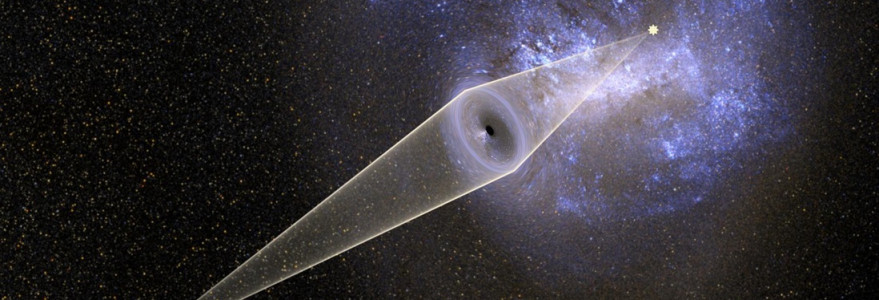Gravitational wave detectors, LIGO and Virgo, have detected a population of massive black holes whose origin is one of the biggest mysteries in modern astronomy. A team of scientists from the OGLE project of the UW’s Astronomical Observatory presented the results of nearly 20-year-long observations. The results were published in “Nature” and “Astrophysical Journal Supplement Series”.
Various astronomical observations indicate that ordinary matter, which we can see or touch, comprises only 5% of the total mass and energy budget of the Universe. In the Milky Way, for every 1 kg of ordinary matter in stars, there is 15 kg of “dark matter,” which does not emit any light and interacts only by means of its gravitational pull.
“The nature of dark matter remains a mystery. Most scientists think it is composed of unknown elementary particles,” Dr Przemek Mróz from the UW’s Astronomical Observatory, the lead author of both articles, said. “Unfortunately, despite decades of efforts, no experiment, including experiments carried out with the Large Hadron Collider, has found new particles that could be responsible for dark matter.”
Since the first detection of gravitational waves from a merging pair of black holes in 2015, the LIGO and Virgo experiments have detected more than 90 such events. Astronomers noticed that black holes detected by LIGO and Virgo are typically significantly more massive (20–100 solar masses) than those known previously in the Milky Way (5–20 solar masses).
“Explaining why these two populations of black holes are so different is one of the biggest mysteries of modern astronomy,” Dr Mróz emphasised.
One possible explanation postulates that LIGO and Virgo detectors have uncovered a population of primordial black holes that may have formed in the very early Universe. Since the first detection of gravitational waves, more and more scientists have been speculating that such primordial black holes may comprise a significant fraction, if not all, of dark matter.
In the new article in The Astrophysical Journal Supplement Series, OGLE (Optical Gravitational Lensing Experiment) astronomers present the results of nearly 20-year-long photometric monitoring of almost 80 million stars located in a nearby galaxy, called the Large Magellanic Cloud, and the searches for gravitational microlensing events. The analysed data were collected during the third and fourth phases of the OGLE project from 2001 to 2020.
“Microlensing occurs when three objects – an observer on Earth, a source of light, and a lens – virtually ideally align in space,” said Prof. Andrzej Udalski, the principal investigator of the OGLE project. “During a microlensing event, the source’s light may be deflected and magnified, and we observe a temporary brightening of the source’s light.”
The second article, published in Nature, discusses the astrophysical consequences of the findings.
“If the entire dark matter in the Milky Way was composed of black holes of 10 solar masses, we should have detected 258 microlensing events. For 100 solar mass black holes, we expected 99 microlensing events. For 1000 solar mass black holes – 27 microlensing events,” Dr Mróz explained.
In contrast, the OGLE astronomers have found only 13 microlensing events. Their detailed analysis demonstrates that all of them can be explained by the known stellar populations in the Milky Way or the Large Magellanic Cloud itself, not by black holes.
“Our observations indicate that primordial black holes cannot comprise a significant fraction of the dark matter and, simultaneously, explain the observed black hole merger rates measured by LIGO and Virgo. The results we obtained will remain in astronomy textbooks for decades to come,” Prof. Udalski said.
Publication details




